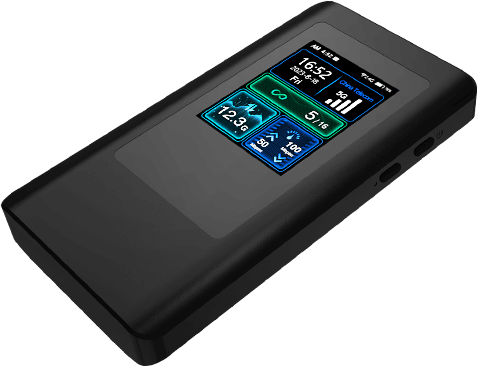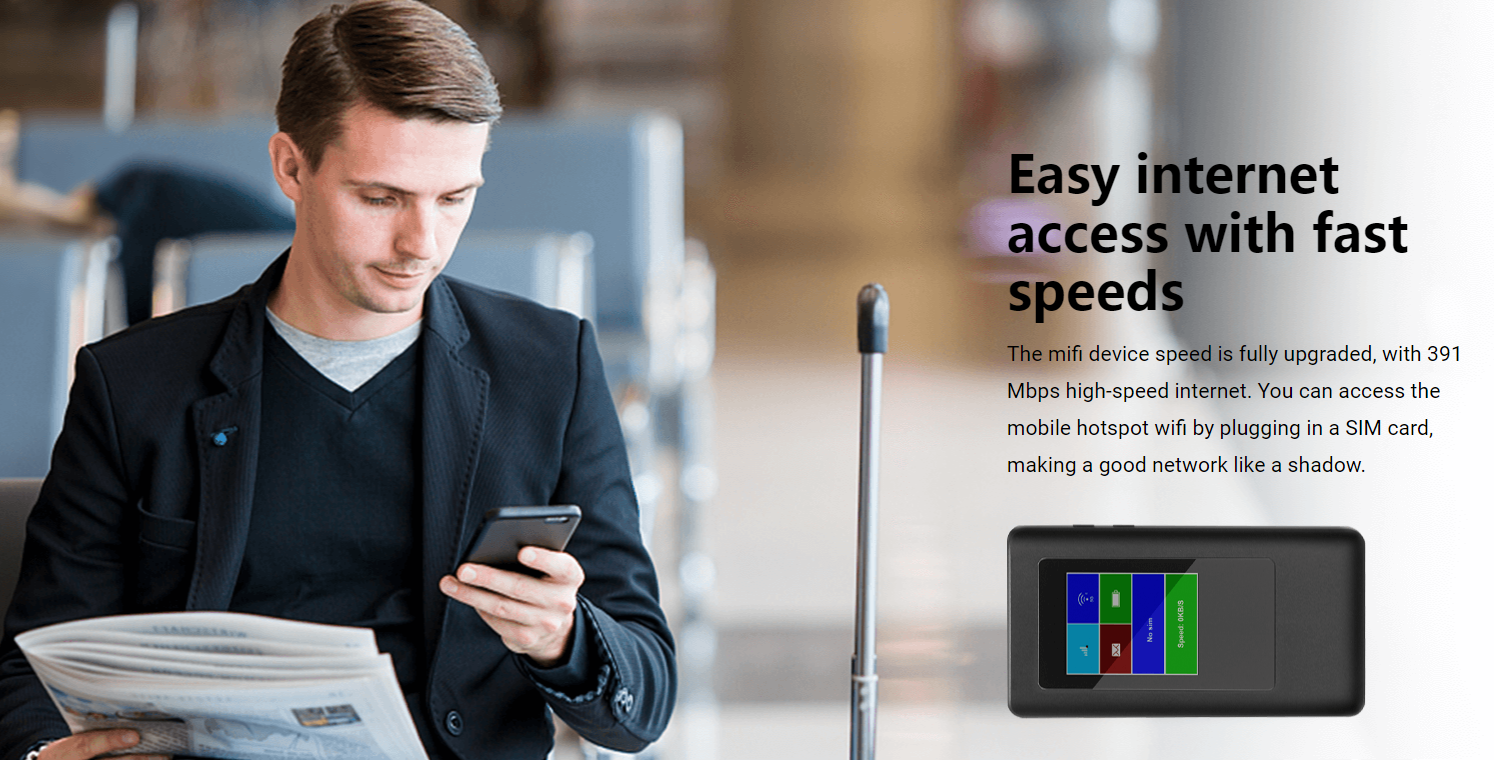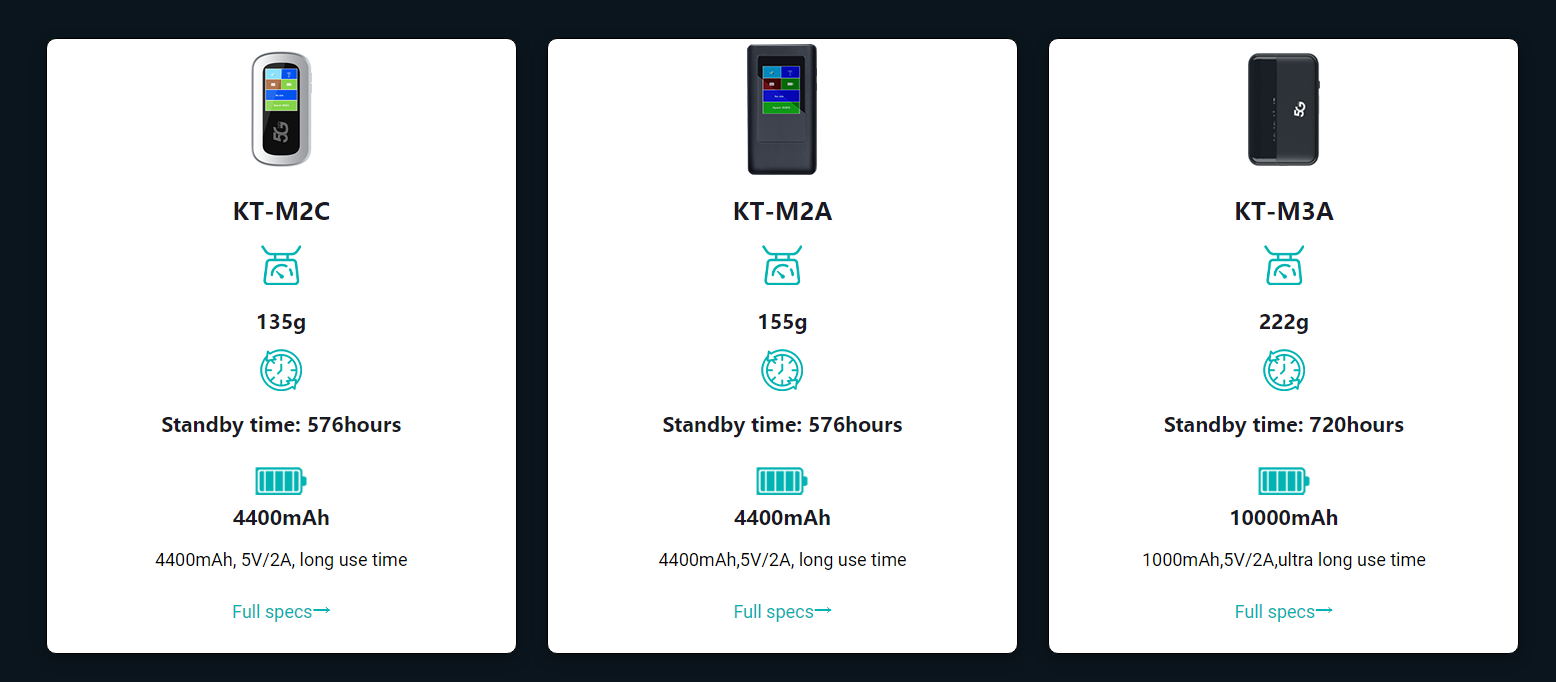Introduction
The emergence of 5G technology has brought about a transformative revolution in the realm of connectivity and communication. With its exceptional speed and minimal latency, 5G has unlocked an array of possibilities in the realm of mobile connectivity, reshaping the way we connect and communicate in profound ways. In this blog post, we delve into the realm of 5G MiFi devices with screens, exploring their features, benefits, and how they are shaping the future of wireless connectivity. Join us on this journey as we uncover the 5G MiFi device review and how the devices can enhance our digital lifestyles.

Understanding 5G Technology
5G technology signifies a remarkable advancement in wireless communication, providing unparalleled speeds, minimal latency, and the capability to connect an extensive multitude of devices concurrently. This leap forward in connectivity sets a new standard for the potential of wireless communication. To fully grasp the significance of 5G MiFi devices with screens, it's essential to understand the key characteristics of 5G technology.
Ultra-Fast Speeds: 5G technology promises blazing-fast speeds that surpass those of its predecessors. This unprecedented speed unleashes a world of possibilities, offering users an effortless and immersive digital experience. This breakthrough capability ensures a seamless and immersive digital experience for users. This speed revolutionizes the way we consume and transmit data, enabling high-bandwidth activities like virtual reality (VR) gaming, 4K video streaming, and cloud-based applications.
Low Latency: Latency, which denotes the time lag between issuing a command and receiving a network response, experiences a significant reduction with 5G technology. With the goal of achieving near-instantaneous response times of less than 1 millisecond (ms), 5G strives to minimize latency to an unprecedented degree. This ultra-low latency holds immense importance for applications that rely on real-time communication, including autonomous vehicles, remote surgery, and industrial automation, where split-second responsiveness is crucial. By minimizing latency, 5G technology enables faster decision-making and enhances overall user experience.
Massive Device Connectivity: An inherent characteristic of 5G technology is its capacity to accommodate an extensive multitude of interconnected devices within a specific geographic area. This capability sets 5G apart, enabling seamless connectivity for a vast array of devices simultaneously. While previous generations of wireless technology were primarily designed to connect people, 5G aims to connect people, devices, and things. This capability is vital for the implementation of the Internet of Things (IoT) and smart city initiatives, where billions of sensors, wearables, and smart devices will be interconnected, exchanging data and enabling intelligent automation.
Network Slicing: In addition to its speed and connectivity capabilities, 5G introduces the concept of network slicing. Network slicing enables the establishment of virtual and independent networks within the broader framework of the 5G infrastructure. This innovative capability allows for the customization and allocation of dedicated network resources to meet the specific requirements of different applications, services, or user groups, ensuring optimal performance, efficiency, and flexibility. Each network slice can be optimized to meet specific requirements, such as ultra-reliable low-latency communication (URLLC) for mission-critical applications or enhanced mobile broadband (eMBB) for high-speed data transmission. Network slicing ensures that different use cases receive the necessary network resources and performance tailored to their specific needs.
Enhanced Spectral Efficiency: In order to maximize spectral efficiency, 5G technology utilizes state-of-the-art techniques such as advanced antenna systems, beamforming, and massive MIMO (Multiple-Input Multiple-Output). These cutting-edge methods optimize the utilization of the available frequency spectrum, allowing 5G networks to transmit and receive data more efficiently and effectively. By leveraging these advanced techniques, 5G technology can accommodate a larger number of users and devices while maintaining high data rates and minimizing interference. Spectral efficiency pertains to the capacity of transmitting data over a specific frequency spectrum. Leveraging these advanced techniques, 5G maximizes spectral efficiency, enabling the accommodation of a larger number of users and devices concurrently. This results in high data rates, reduced interference, and efficient utilization of the available spectrum.
Edge Computing: The integration of 5G technology with edge computing is a notable aspect that brings substantial benefits. By leveraging the capabilities of edge computing, 5G networks can achieve rapid response times and enable real-time processing for latency-sensitive applications such as augmented reality (AR), virtual reality (VR), and autonomous systems. Edge computing involves processing and storing data closer to the source, reducing reliance on distant data centers. This proximity allows for faster data processing and reduced latency, resulting in enhanced user experiences and improved performance for time-critical applications. This integration enhances the overall performance and responsiveness of these applications, providing users with seamless and immersive experiences.
Security and Network Resilience: As with any technology, security and network resilience are crucial considerations for 5G networks. With the massive proliferation of connected devices and the critical nature of certain applications, robust security measures are essential to safeguard data and protect against cyber threats. Additionally, 5G networks are designed to be highly resilient, ensuring uninterrupted connectivity even in the face of network congestion or physical disruptions.
Understanding the fundamental characteristics of 5G technology sets the stage for comprehending the significance of 5G MiFi devices with screens. These devices harness the power of 5G networks to provide users with high-speed internet access, real-time data monitoring, and enhanced functionality on the go. Whether it's for remote work, travel, or simply staying connected in a hyper-connected world, 5G MiFi devices with screens offer a gateway to a future where seamless connectivity is the norm.
What is a 5G MiFi?
A 5G MiFi device, also known as a 5G mobile hotspot, is a portable wireless router that utilizes 5G technology to create a mobile Wi-Fi hotspot. It enables users to connect multiple devices, such as smartphones, tablets, laptops, and smart devices, to the internet simultaneously, providing them with high-speed internet access on the go. Compared to traditional portable hotspots, 5G MiFi devices offer several key features and advantages that make them a desirable choice for users seeking reliable and convenient connectivity:
Mobile Wi-Fi Hotspot: One of the primary functions of a 5G MiFi device is to create a mobile Wi-Fi hotspot. By connecting to a 5G network, the device establishes a local Wi-Fi network that can be accessed by nearby devices. This allows users to share a single internet connection among multiple devices, eliminating the need for each device to have its own cellular data plan.
Connectivity for Multiple Devices: A significant advantage of 5G MiFi devices is their ability to connect multiple devices simultaneously. Whether you're traveling with family, working in a team, or simply have multiple devices that require internet access, a 5G MiFi device can accommodate them all. This feature is particularly useful in situations where Wi-Fi networks are limited or unreliable, such as in remote areas or crowded public spaces.
Internet Access on the Go: 5G MiFi devices provide users with internet access wherever there is 5G network coverage. Whether you're on a road trip, attending a conference, or working remotely from a coffee shop, a 5G MiFi device ensures that you stay connected. This flexibility allows users to access the internet and stay productive, even in locations where traditional Wi-Fi networks may be inaccessible or unreliable.
Cost-Effective Alternative: Using a 5G MiFi device can be a cost-effective alternative to relying solely on cellular data or public Wi-Fi networks. Instead of consuming your smartphone's data plan or relying on potentially insecure public Wi-Fi networks, a 5G MiFi device provides a dedicated and secure connection for your devices. This can help you avoid excessive data charges and potential security risks associated with public Wi-Fi networks.
Enhanced Security and Control: 5G MiFi devices offer additional security features and control over your internet connection. Many devices come with built-in security protocols, such as WPA2 encryption, to protect your data from unauthorized access. Additionally, you have the ability to set up a password and manage the connected devices, giving you greater control over who can access your network.
Portability and Battery Life: 5G MiFi devices are designed to be compact and portable, allowing you to easily carry them in your pocket, bag, or backpack. They often have built-in rechargeable batteries that provide hours of usage, ensuring uninterrupted connectivity even when you're on the move. The portability and long battery life of 5G MiFi devices make them ideal companions for travelers, digital nomads, and individuals who require reliable internet access outside of traditional settings.

Key Features and Benefits of 5G MiFi with screen
5G MiFi devices with screens offer an enhanced user experience by combining the functionalities of a portable wireless router with the convenience of a built-in screen. These devices provide several key features and benefits that elevate their usability and versatility:
Portability and Long Battery Life: Like traditional 5G MiFi devices, those with screens maintain their portability, allowing users to carry them anywhere. They are compact and lightweight, fitting easily into pockets or bags. Additionally, they often come with long-lasting battery life, ensuring extended usage without the need for frequent recharging. This combination of portability and battery life makes 5G MiFi devices with screens ideal companions for travel, remote work, and on-the-go connectivity.
Compatibility with Multiple 5G Bands: 5G MiFi devices with screens are designed to be compatible with multiple 5G bands. This compatibility enables them to connect to a wide range of 5G networks, ensuring reliable connectivity in various regions. Whether you're traveling internationally or in an area with different 5G frequency bands, a 5G MiFi device with screen versatility allows you to stay connected effortlessly.
Screen for Network Management: The inclusion of a screen in a 5G MiFi device offers convenient network management capabilities. Users can access and modify network settings directly on the device, eliminating the need for a separate device or app for configuration. The screen provides an intuitive interface for managing Wi-Fi passwords, changing network names, and adjusting security settings, making network management more accessible and user-friendly.
Data Usage Monitoring: The screen on a 5G MiFi device allows users to monitor their data usage in real-time. It provides valuable insights into how much data has been consumed, enabling users to track their usage and avoid exceeding their data limits. With this information readily available on the device, users can make informed decisions about their data consumption and manage their connectivity accordingly.
Access to Advanced Features: 5G MiFi devices with screens often come equipped with advanced features that enhance the user experience. These features may include VPN (Virtual Private Network) support for secure browsing, parental controls for managing internet access, and guest network functionality for creating separate networks for visitors. The screen provides a convenient platform for accessing and configuring these advanced features, allowing users to customize their connectivity experience according to their specific needs.
Media Hub Functionality: The inclusion of a screen in a 5G MiFi device transforms it into a versatile media hub. Users can stream videos, play games, and access content directly on the device. This feature is particularly useful when Wi-Fi connectivity is limited or unavailable, such as during travel or in remote areas. The screen provides a larger display for enjoying multimedia content, enhancing the entertainment and productivity value of the device.
Content Sharing: 5G MiFi devices with screens can act as a central hub for content sharing among connected devices. Users can share files, photos, and videos seamlessly from their smartphones, tablets, or laptops to the MiFi device, allowing other connected devices to access the shared content. This capability simplifies the process of sharing files among devices, fostering collaboration and convenience.

The future of 5G MiFi device review
Here are some potential advancements and developments that we can anticipate:
Enhanced Screen Resolutions: As display technology progresses, we can expect 5G MiFi devices to feature improved screen resolutions. Higher pixel densities, enhanced color reproduction, and increased screen sizes may become standard, offering users a more immersive and visually appealing experience when managing their network settings, accessing content, or enjoying multimedia.
Integration with Augmented Reality (AR) and Virtual Reality (VR): 5G MiFi devices may integrate seamlessly with AR and VR technologies. This integration could enable users to experience immersive virtual environments, stream AR content, or even use the device as a hub for AR/VR applications. By leveraging the low latency and high bandwidth of 5G networks, these devices can provide users with captivating and interactive experiences.
Integration with Smart Home Ecosystems: In the future, 5G MiFi devices with screens could seamlessly integrate with smart home ecosystems. Users may be able to control their smart home devices, manage security systems, or monitor energy consumption directly from the device's screen. This integration would enhance the convenience and centralization of smart home management, providing users with a unified control hub.
Proliferation of 5G Networks: As 5G networks continue to expand globally, the adoption of 5G MiFi devices is expected to grow significantly. The wider availability of 5G coverage will enable more users to leverage the benefits of high-speed, low-latency connectivity on their 5G MiFi devices. This increased adoption will likely drive further innovation and refinement of these devices, leading to more advanced features and functionalities.
Multi-Device Collaboration: Future 5G MiFi devices may facilitate seamless collaboration between multiple devices. Users may be able to effortlessly share content, synchronize settings, and establish interconnected networks between their smartphones, tablets, laptops, and other IoT devices. This collaborative capability would enhance productivity and streamline connectivity across different devices within a user's ecosystem.
Advanced Security Features: With the growing reliance on connected devices, the future of 5G MiFi devices will likely prioritize advanced security features. To ensure the utmost security, these devices may integrate strong encryption protocols, biometric authentication, and advanced network security measures. These robust security features work collectively to safeguard user data and mitigate potential cyber threats, providing users with peace of mind and a secure digital environment. This focus on security will ensure that users can enjoy the benefits of 5G connectivity without compromising their privacy or data integrity.


 French
French German
German Arabic
Arabic Italian
Italian Spanish
Spanish Japanese
Japanese Persian
Persian Korean
Korean Chinese (Simplified)
Chinese (Simplified)










